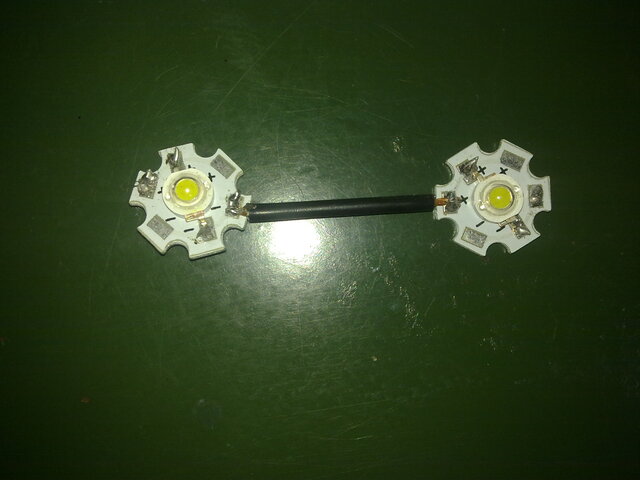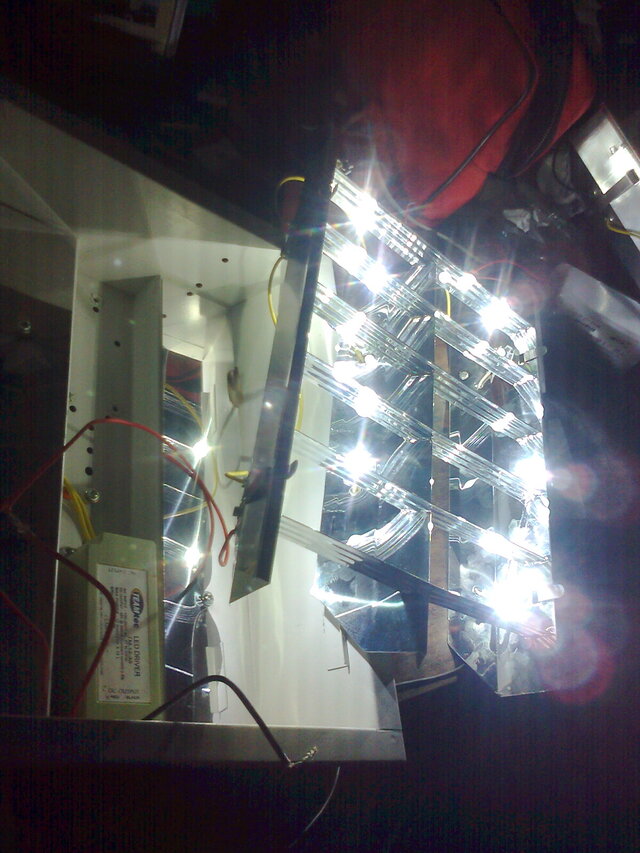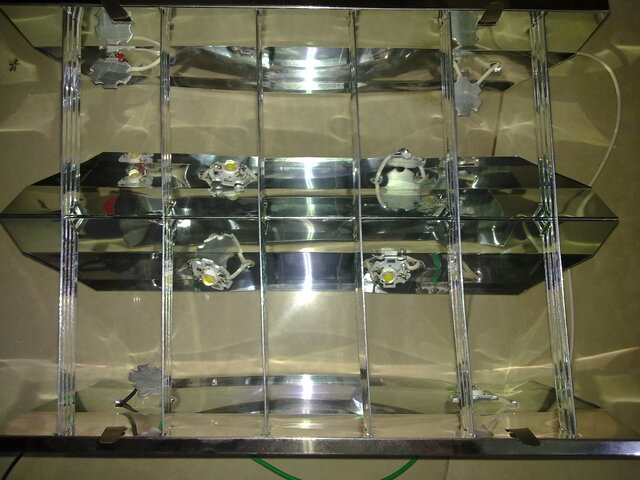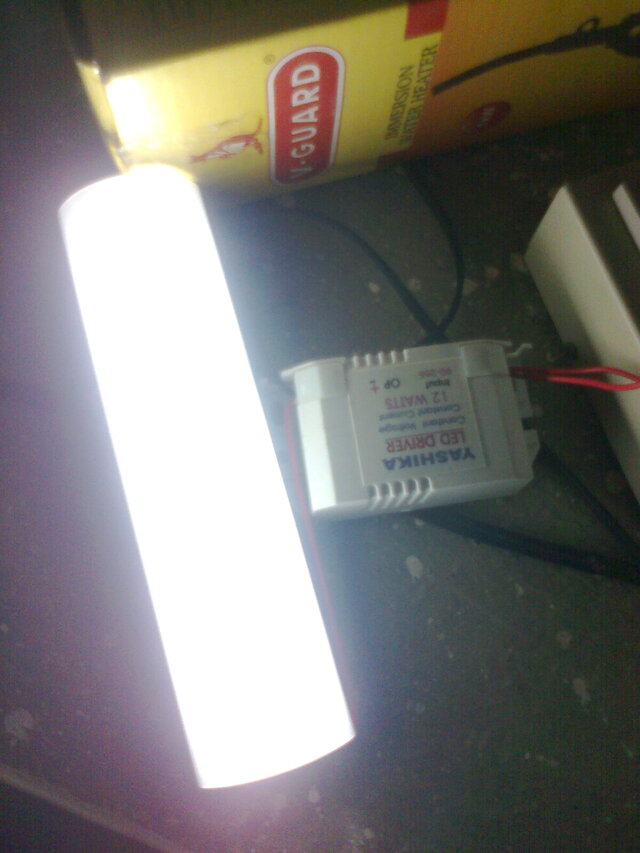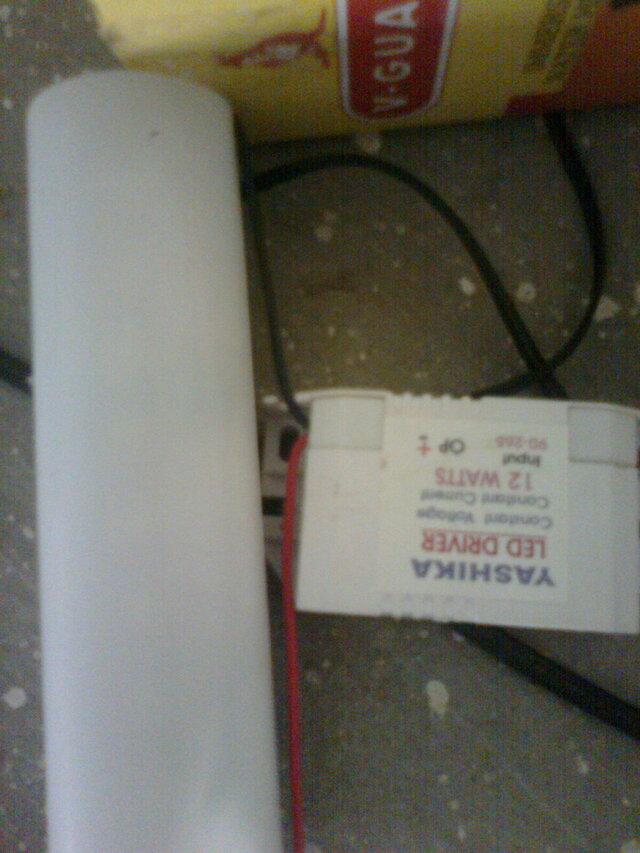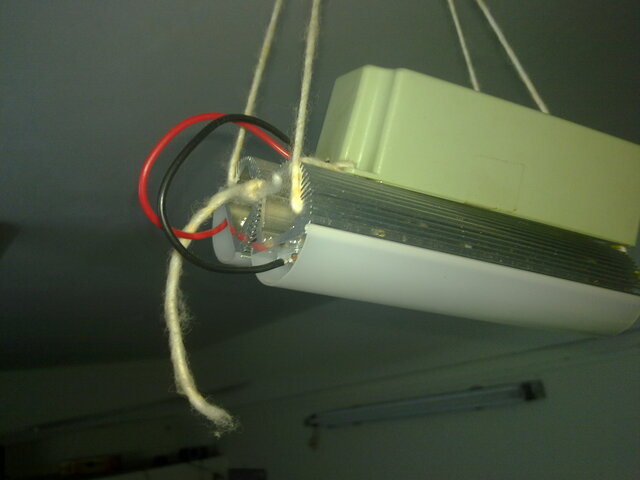My experiments with LED lighting
Published on
Tags: LED, electrical, DIY
I've been experimenting with LED lights for quite sometime now. Every time I try to put up a blog post, I hit the error not enough data. I realized that there can never be enough data. So I'll just give information on my experiences so far.
LED lights have been used as indicators and traffic lights in the past. They are point sources of light that are visible from long distances, but was never enough to give light like a florescent tubes until about 10-15 years ago. In the recent times, the cost has been decreasing for high power LEDs, making it affordable(though not economical yet).
Firstly, I tried high power LEDs by buying a few 1W LEDs and experimenting with them. A 1W LED cost Rs.60 approximately. The trouble was finding a good quality one. The LED lights that I bought were slightly better than CFLs of same power, but not enough to complete with a tube light. After much trial and error, I found LEDs of welly Power optronics corporation very good. I used the LEDs effectively to setup a light for my mother's hospital reception. As shown in the photo shot, the LEDs were put inside a CFL enclosure. The results were outstanding. The LEDs managed to replace CFLs of twice its power. I made 10 such enclosures that is currently lighting up my mother's hospital reception. Eight enclosures contain 8 LEDs each and two enclosures contain 12 LEDs. They are connected in series to a converter. Below are the screen shots.
The experiment with reception was good, though quite expensive the enclosures cost Rs.9000. The 88 LEDs+PCBs used cost another Rs.4400 and converters Rs.4000. Wires and soldiering another Rs.500, adding upto Rs.17900. The enclosures originally meant for CFLs had copper ballasts and were wasted. It would have cost Rs.5000 lesser had it been not for those ballasts. Power wise it was a big gain though. t was 110W of LED instead of 240W of CFL in enclosures or 300W of tube light(tube lights fare poorly when directional light is needed). The constant current drivers that was used cost Rs.400 per piece and has a warranty of 1 year. It will be the deciding factor on how good my experiment is. If it lasts for 10 years then it would reach break even and there after it will be economical(building planners actually think that much ahead). So, are LEDs a big gain over CFLs and florescent tubes? Well, it depends on the situation. For the hospital reception LEDs clicked because of a property of LEDs they are directional and give light straight down, while in case of CFLs and florescent tubes they spread evenly all over the place. Enclosures need to give light straight down and hence LEDs worked really well. In case of home lighting, it is a different story. Florescent tubes give the same amount of Light 360°. It beats CFL lights by a league. I've tried using a 20W LED tube bought from ebay and a 20W LED light assembled by from a tube like enclosure. The 20W LED tube from ebay was of modest price (and probably quality too). The tube was unbranded and half the price of a usual LED tube. I found from my luxmeter it gave an overall light that is 70% of a 36W tube at 50% of a 36W tube's power. Since LED lights are directional, it did not spread light 360° like a normal florescent tube, thus the room was dark in places where the LED tube did not face directly. But it was okay overall, and to my eyes it was as good as the 36W tube I compared with. The 20W tube like enclosure made from welly power LEDs(see the 20W one below; also I made 10W ones) gave light equal to a 36W tube. However, it was poorer in spreading light than compared to the other tube and it left the places that did not directly face dark. Especially the region behind it. Also, since the tube was much shorter and since I used two rows of 10W enclosures, it created distinct shadows unlike a tube light. Hence it gave an overall unsatisfactory feeling to the eye and one needs to adapt mentally to it.
The cost of the modest quality LED tube was Rs.1100(the ones available in the market varies between 1600-3000INR), while the cost of 20W setup was Rs.2000 approximately(18 LEDs, 20W adapter, 2 enclosures). The LED tube has been in operation at my home for about an year now. Everyone at home fits it comfortable enough for all purposes. I'm going to buy an better quality LED tube and see how it performs.
I also tested LED bulbs against CFLs. I bought a 9W Edison LED bulb and tested it against a 25W HPL CFL. The LED bulb didn't turn out good as it gave 54% of lumens at 36% of the electric power. Also it is very concentrated compared to CFL or fluorescent tube light, hence I'm leaving the idea of using LED bulbs for home. It is worth noting that the 36W fluorescent tube light was 4 times brighter than the 25W CFL.
Buying tips
The brightness of an LED lighting can be determined by the lumen/watt or overall lumen of the bulb. A normal fluorescent tube light has about 60-80 lumen per watt and CFLs have about 40-50 lumen per watt.
By the way, if any manufacturer says that LEDs don't generate heat, don't believe him. LEDs convert only 10-20% of electricity to light. Rest is converted to heat. LEDs life time is determined by 2 things other than quality its internal temperature and life of the constant current LED driver. Higher the temperature, lower the lifetime(50000 hours at 85°C internal temperature). The electronic adapter is also the weak link in a driver's lifetime. It depends on quality. The drivers that I get come with an 1 year replacement warranty.. I got a driver replaced after it failed under 3 weeks. None of the other 15 drivers that I bought have failed yet.
19-Feb-13: I bought a 6W LED bulb from ebay last week. It was as good as the 9W LED bulb that I mentioned earlier. It used 6 bridgelux 1W LEDs that gives 150 lumens/watt. It costs Rs.790+ Rs.100 for shipping and the seller has given a warranty for 2 years.
To conclude
- Buy carefully. Some LEDs are poorer than CFLs.
- For recessed lightings used in showrooms, LEDs like the ones I used in my mother's hospital should be considered. They are much better than CFLs.
- For home lighting, LED tubes should be considered.
MORE UPDATES HERE IN A NEW POST: My Experiments With Led Lighting 2: Downlights, Tubes and floodlight
